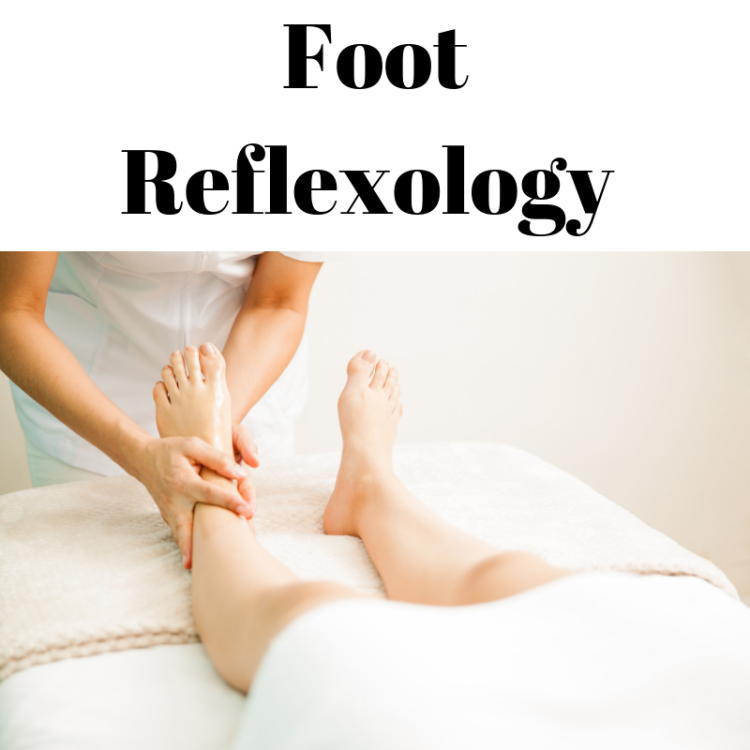
CONTENTS
• What is Reflexology?
• What Is a “Reflex”?
• Where is Reflexology from?
• What is Reflexology for?
• What is a session like?
What is Reflexology?
While Reflexology feels similar to massage, it is a unique therapy with its own separate education, certification, theory, and practices.
During a Reflexology session a variety of specialized techniques which feel similar to a combination of massage and acupressure are applied to reflexes. Most people describe it as profoundly relaxing, or as being in a state that is somewhere between sleeping and awake. It is a great way to promote your body’s natural healing abilities, while improving circulation and encouraging immune system balance. After all, the body functions best with lower stress.
What Is a “Reflex”?
In the context of reflexology, a reflex simply refers to an energy center, or nerve endings… in this context they are thought of as the same thing. They refer to points on the body, similar in the way that acupuncture aims to tap into energy pathways. Reflexology is based on different pathways, and instead of using needles, a form of pressure with the hands is applied, almost like massage.
Where is Reflexology from?
Reflexology has been practiced throughout the world in ancient cultures including ancient Egypt, China, India, and Native America. The name “reflexology” is a relatively new term, which is used to collectively refer to ancient methods based on energy, as well as newer methods based on neurophysiology.
What is Reflexology for?
Most clients have utilized reflexology as an adjunct therapy for reasons varying from anxiety, to plantar fasciitis, and even sinus or digestive issues. The purpose of reflexology is not to treat or cure disease, but rather to help the nervous system kick back a notch, and let the body function without stress impeding it.
Many people that have trouble sleeping, or focusing find it to be a helpful practice, and use it as a way to get back on track. I myself find it helpful to aid in relief of celiac symptoms such as preventing skin flare ups, sinus drainage, and GI relief. Everyone experiences reflexology a little differently.

OK… but what can I expect during a session?
While every practitioner is a little different (it’s important to find a good fit), there are some basic similarities. Reflexology is commonly practiced on one specified body part, making it easy, and low maintenance. You can even stay clothed during your session if preferred. For example Foot reflexology only requires access to feet, and calves. The most common types are Foot, Face, and Hand Reflexology. The session takes place on a massage table, similar to a massage, and usually incorporates heated towels, and oil or lotion. Pressure varies, and can be tailored to comfort. Just like massage, heated stones, and other tools can be added.
Reflexology is a helpful tool in health maintenance. It is best used to increase overall health, and has gradual but lasting benefits. A weekly or bi-weekly session with a practitioner is recommended in most studies. Personally, I think that weekly or bi-weekly can be helpful in the beginning. When your stress becomes better managed, you can go to twice or once a month. Ultimately, you are the best judge of how often you should go.
The Power of Touch
STRESS AND HEALTH
“There is now good evidence (in animal and human studies) that the magnitude of stress-associated immune dysregulation is large enough to have health implications.”
source
STRESS AND AUTOIMMUNE DISEASE
“Exposure to a stress-related disorder was significantly associated with increased risk of subsequent autoimmune disease, compared with matched unexposed individuals and with full siblings.” source
TOUCH THERAPY AND STRESS
Therapeutic touch promotes relaxation, while affecting emotional, physical, and mental well-being. Therapeutic touch creates positive chemical and electrical reactions within the body, encourages the release of endorphins, and encourages the body’s self healing abilities.
THE VAGUS NERVE AND WHY YOU SHOULD CARE ABOUT IT
“The vagus nerve represents the main component of the parasympathetic nervous system, which oversees a vast array of crucial bodily functions, including control of mood, immune response, digestion, and heart rate.” read moreBook Online

Our Founder’s Personal Journey with Reflexology
Many many years ago I was just starting to explore reflexology. I’ve been a life-long fan of massage and holistic health in general, so to me this was just another therapy to try. It felt like a unique type of foot work to me. I felt amazingly calm and felt my nerves kick it down a notch. Read more here.
Links to articles
Benefits of Foot Reflexology
http://www.livestrong.com/article/25602-benefits-foot-reflexology/#ixzz1mNkI6G7j
Reflexology and Fibromyalgia http://www.fibromyalgia-symptoms.org/fibromyalgia_reflexology.html
Reflexology for Pregnancy and Labor
http://www.babyzone.com/pregnancy/prenatal-care/reflexology-pregnancy-labor_71193
Reflexology and Women’s Health
http://suite101.com/article/reflexology-and-womens-health-a58041
Reflexology and How It Helps PMS
http://www.articlesbase.com/alternative-medicine-articles/reflexology-and-how-it-helps-pms-593960.html
Reflexology for PMS
http://suite101.com/article/reflexology-for-pms-a51768
Reflexology and PTSD (post traumatic stress disorder)
http://www.ptsdhelp.co.uk/reflexology.html
Reflexology and Weight Management
http://suite101.com/article/reflexology-and-weight-management-a86031
Reflexology and Multiple Sclerosis
http://ms.about.com/od/alternativemedicine/a/reflexology_ms.htm?r=facebook
Please remember
As with any health practice, you should always consult your Primary Care Provider (PCP) first. Your reflexologist does not treat, cure, diagnose, or interfere with the care of your PCP.
2 thoughts on “Reflexology Facts and Research”